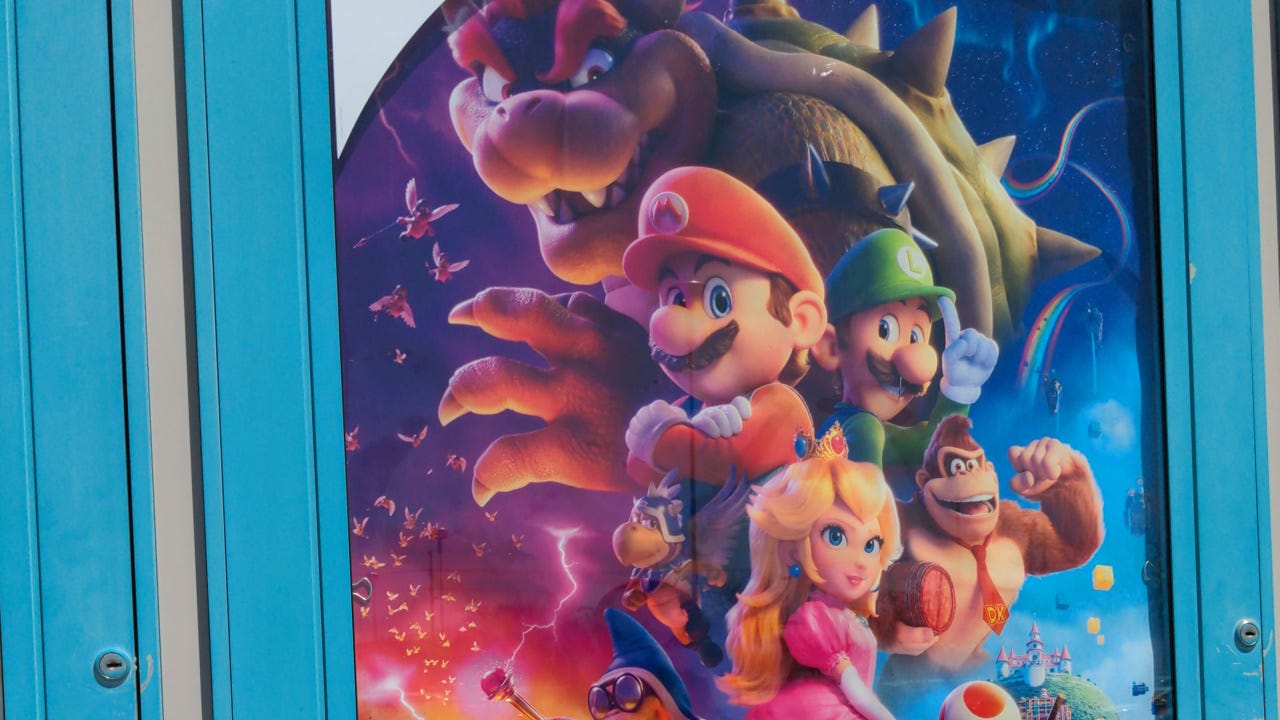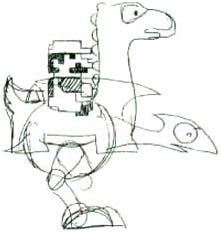The Success of Super Mario Bros. Explained
Rome wasn't built in a day, and neither was Mario's Empire
Like many people, over the Easter weekend I saw the Super Mario Bros. Movie, and I was not disappointed.
The film not only scored a 98% rating from fans on Rotten Tomatoes, but broke multiple box-office records.
Super Mario saved the gaming industry in 1985, and now in 2023 I'd say he's saved the film industry too.
Countless others have analyzed the level design of Super Mario Bros., but today I want to teach a lesson from Mario that specifically helps solo game developers and has often gone ignored.
But first...
The Super Mario series is actually the reason I pursued game development in the first place.
My first video game (at 3 years old) was Super Mario World, and I fell in love with video games ever since.
I enjoyed the challenge each level presented, testing my skills and forcing me to learn and improve myself.
Before long, I became known as the "expert gamer" of the family, eventually growing up to become the "computer genius" too.
Not only did I enjoy challenging myself, but I enjoyed challenging others, and I would invent my own games for others to play.
At first I started by drawing Mario levels on paper, but at the age of 12 I taught myself coding in Game Maker and started creating Super Mario fan-games.
I've created a wide variety of games since then, but you can see the influence of Super Mario (and others) in my platformer game Snowball Saves Summer.
What I'm about to teach you is something I call the "Snowball Method", which I conceived while making that game.
A snowball starts off small, but as you roll it downhill, it picks up more snow and eventually become a giant, unstoppable force.
This metaphor perfectly describes the Super Mario Bros. series.
The Super Mario World which inspired my passion for game development was not just the work of a single game, but the culmination of all of the work poured into the games in the Mario series across the years leading up to it.
The character Yoshi was actually designed in 1985 for the original Super Mario Bros., but due to technical constraints, he was never actually programmed into the game until Super Mario World, five years later.
I'm sure there were many other ideas they wanted to add, but never did.
Indie game developers often want to put all of their great ideas into one giant, ambitious game.
In this case, hardware limitations prevented Nintendo from getting too ambitious.
But today, hardware isn't so limiting -- our imaginations are the only limits.
That's why it's so easy for indie devs to dream up huge game ideas which result in scope creep, endless delays, and ultimately poor results for both the players and the developer.
Nintendo started off small -- in fact, they truly began with Donkey Kong in 1981, then Mario Bros. in 1983, before finally making Super Mario Bros. in 1985.
This small, iterative approach allowed them to test what worked and what didn't.
They then took all of the elements from Super Mario Bros. and improved it for Super Mario Bros. 2 in 1986 (the Japanese version) and then completely redefined the experience with Super Mario Bros. 3 in 1988.
With the release of the Super Nintendo in 1990, they had powerful enough hardware to finally add Yoshi into the game.
As a result, Super Mario World was packed to the brim with fun and engaging content that had essentially been in progress for nearly a decade.
The lesson is that you shouldn't bet your entire livelihood on one giant game.
It’s a lesson that many indie devs, including myself, have learned the hard way.
If you want to make Super Mario World, you have to start with Donkey Kong.
Donkey Kong proved that jumping was fun, and only limited itself to a single screen which repeated itself endlessly.
Mario Bros. introduced enemies, coins, Koopas, and the titular brothers themselves.
Super Mario Bros. introduced the moving screen, power-ups, level types, and Bowser.
Super Mario Bros. 3 introduced the world map, more complex power-ups, more complex enemies, and more level types.
And finally, Super Mario World added Yoshi, switch palaces, secret exits, and even more power-ups, enemies, and level types.
Trying to create Super Mario World from the very beginning would take way too long, and the result probably wouldn’t be very good.
But if you start with Donkey Kong, you'll create a playable game that others can enjoy while you learn the process of coding gravity and jumping.
My advice is to divide your dream game up into smaller games, and release them as you grow your skills and create the building blocks for the dream game.
Thus, you can deliver value and grow your audience without losing sight of your goal.
Figure out the core elements of your game, and just make the smallest possible game -- your minimum viable product.
Then you can build upon your MVP, re-using code, assets, and ideas from the previous games, to deliver a much more compelling product.
You want to consistently release small products for three reasons:
1. Keep your motivation high with small wins
If you don't keep your motivation strong, you'll lose the desire to work on your game -- or maybe even games entirely.
Releasing a complete game, even if it's small, will give you a boost of motivation knowing that your work is being experienced by others in the world.
Seeing your work positively impact the lives of others is what keeps everyone motivated to do any kind of work.
You can also showcase your small games on your portfolio as social proof.
It’s better to have made 5 small games over 5 years than a big game still in progress.
2. Keep your audience's attention with new releases
If you don't hold your audience's attention, they'll move on to another game studio.
They'll forget you exist, or at the very least stop caring about whether you succeed.
Consistently deliver value, and you'll slowly but surely build up super-fans.
3. Keep your cash flow coming in to pay your bills
If you don't bring in cash flow, your studio will go under.
Whether you're doing this as a hobby or with the intent to make money, we can agree that bringing in cash flow will allow you to make better games in the future.
I believe that indie devs shouldn't justify their own poverty, but instead try to make a sustainable living with their games.
And I believe that profitability can be achieved without compromising your own ethics or exploiting your player-base.
Releasing small but consistent games is a great solution that rewards both the players and developer.
One final note -- technology has changed a lot since the release of Super Mario World.
Today, we have day-one patches, DLC, in-app purchases, and so on.
You can add content to a single game over time rather than creating multiple games.
I'm not saying to charge money for a broken game -- but charge money for a small but complete experience, and then slowly add to that experience over time.
You can see this method utilized by, quite literally, the most successful solo indie games of all time: Minecraft, Stardew Valley, and even Runescape.
These games took a long time to "finish", but had solid gameplay loops from the start.
They felt like complete games in their earliest iterations, even without being the way we know them today.
In fact, you might argue that those games will never be finished, and that’s the point.
That's why it's so important to pick a genre that can naturally utilize this method.
So next time you think about making a really large and ambitious game, consider how you can break it down into smaller pieces.
Like a snowball, start with a small piece, and build it up over time.
The Super Mario Bros. Movie was such a success because it had decades of content to pull from and juxtapose together.
It didn't just play on nostalgia from the 1980s, but also pulled from modern memes and ideas from the 2010s onward.
As a result, we saw a rich world with a wide variety of characters and lore that could be used to seamlessly advance the protagonists from one story beat to another.
Everything that Nintendo created for the games contributed to the movie’s success.
And just like what happened with the original game, Yoshi didn't play a role in the Super Mario Bros. Movie -- but appears to be hinting at playing a role in a sequel.
Thanks for reading! If you enjoyed this, please share it with those who may like it.





